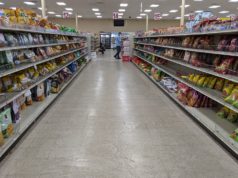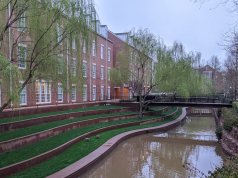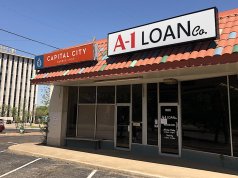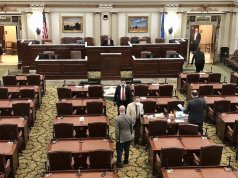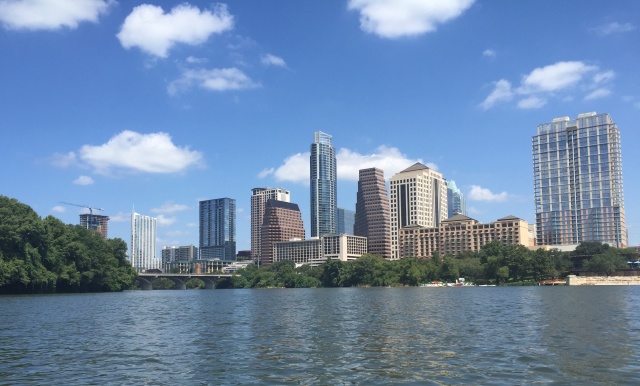
AUSTIN, Texas — The millennials have spoken. They have chosen this proudly odd capital city as their own, flooding it with startups and sustaining a local food-truck economy mesmerizing to behold.
Millennials are on their way to composing more than one-fifth of Austin’s current population. Reiterating the point, more than 72 percent of Austin’s population, according to the city’s 30-year plan adopted in 2012, is under the age of 45.
It seems this is one of the cities of the future, if we’re judging by the attitudes of the folks who’ll shape it. But all’s not quite rosy deep in the heart of Texas. The city of the future’s past still colors its present, often to an alarming degree.
Large portions of the youngsters who’ve flooded this adult playground are well-educated, well-paid and white. With downtown firmly established as a technology hub and the city’s southern confines quickly stretching their suburban reaches, the unsparing hand of gentrification is sweeping east, broaching Interstate 35, long the marker of Austin’s deepest divide: richer, whiter Austin to the west vs. poorer, off-white Austin to the east.
(It seems prudent here to encourage Oklahoma City urbanites to stroll southward from the cosseted confines of Midtown to seek out a similar issue.)
Income segregation widens racial divide
This is an historic problem. The remnants of the “Negro Districts” established by the Austin’s infamous 1928 master plan can still be seen in the concentrated pockets of minority households east of I-35, where they endure higher crime, deficient educational opportunities, lower incomes and all-around neglect. Joining Austin’s black populace on the other side of the interstate is the city’s continually growing Hispanic population, often further underserved by a language barrier.
Their lot is a far cry from the largely Anglo hordes who stalk the haunts of East Sixth Street, now the hip strip of bars and eateries that have pushed out many of the Tejano bars previously prevalent in the area.
As this city, mindful of its image as a liberal, free-thinker haven, has ballooned, the divide between white Austin and black and Latino Austin seems to have yawned even further, even as (or especially as) upper-middle-class whites trickle past the interstate.
In a sprawling report this year on the city’s income equality, the Austin American-Statesman outlined the state of affairs in stark terms:
“The metro area has one of the highest rates of income segregation in the country, a factor that could ultimately limit the ability of Austin’s youth to climb the income ladder and bolster the region’s future prosperity.”
On the list of challenges Austin has experienced as it has boomed from sleepy honky-tonk capital to cool-kid mecca, this long-standing inequality usually gets shoved behind infrastructure spending and transit problems — two issues that contribute to that stark divide.
Black exodus
You see, it becomes increasingly difficult to work your way up the socioeconomic ladder when no bus route will get you from your neighborhood to your job, and no job you can get affords you the means with which to buy a car, let alone move closer to downtown, where rents have skyrocketed as tech has moved in.
It should be no surprise, then, that swaths of Austin’s black residents are fleeing to suburbs like Round Rock and Pflugerville. In a rather startling report from the University of Texas at Austin, researchers mining Census Bureau data discovered that Austin stood alone among fast-growing cities with a shrinking black population: Between 2000 and 2010, Austin’s population grew 20.4 percent. In that same period, the number of African-American Austinites declined 5.4 percent.
Why the exodus? While the recent whitening of East Austin may eventually bring with it more investment in education and infrastructure to match the initial commercial growth, in the meantime, it means higher rents and more limited housing availability. Not even an armada of new H-E-B grocery stores or yoga studios or cocktail lounges can make up the difference.
‘No neighbor left behind’
Development is not the enemy, of course. In fact, it can provide some hope in the form of projects like the City of Austin’s Colony Park community, which seeks to beat inevitable development of an underserved area in northeast Austin to the punch with a planned community to meet the needs of its existing, neglected pool of residents.
Those types of initiatives help fill gaps, but healing a nearly century-old rift will require more holistic approaches. As Austin grows, all of its residents need to grow with it, through job cultivation that focuses on more than just the highly specialized skill set, mass transit options that serve the entirety of the city limits and affordable housing investments that match the high-priced condos and lofts dotting the skyline.
To paraphrase a certain former Texas governor, our approach should be “no neighbor left behind.” Such a radical mindset might just keep Austin weird after all.











